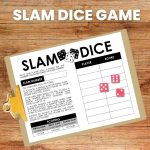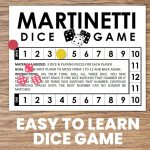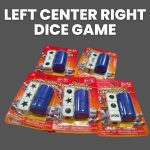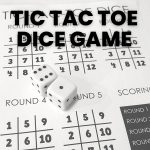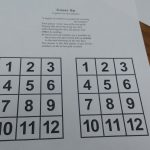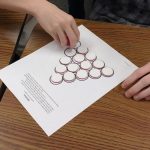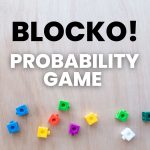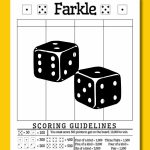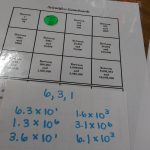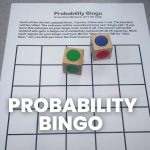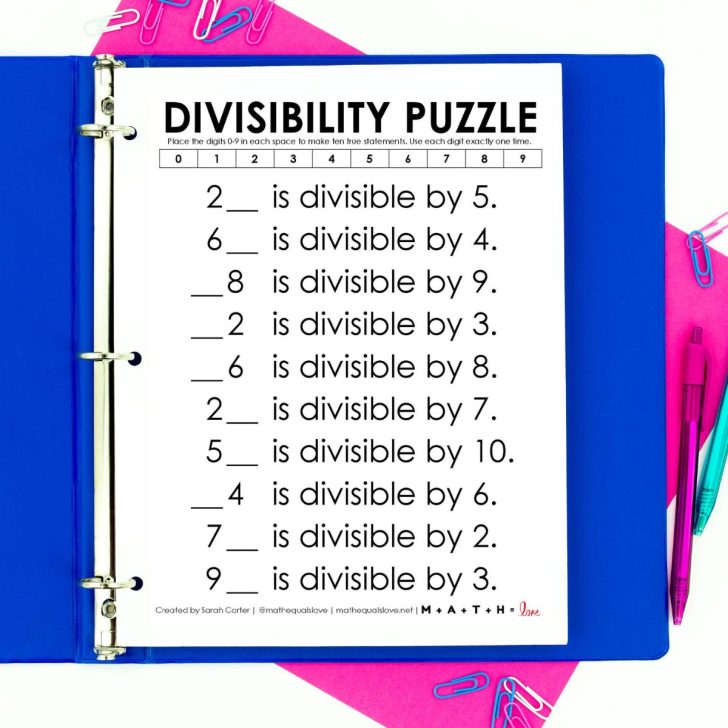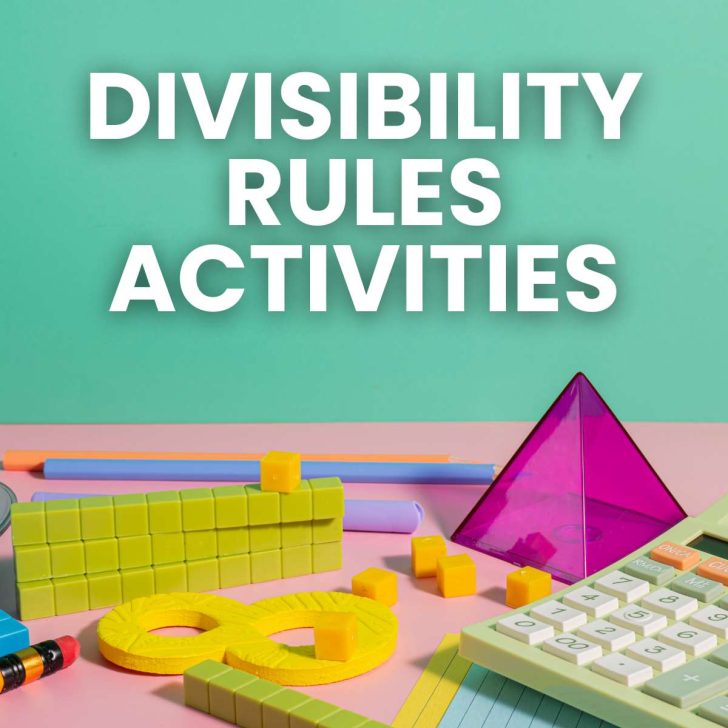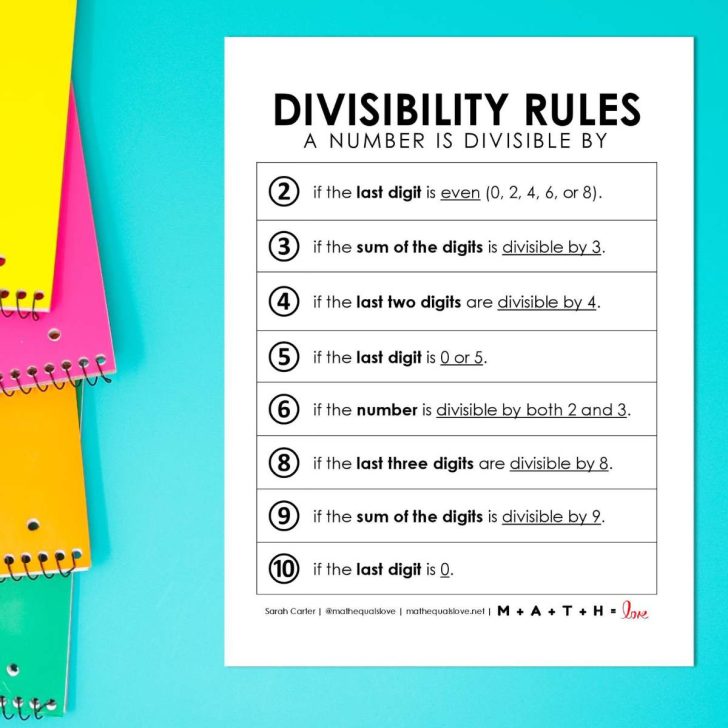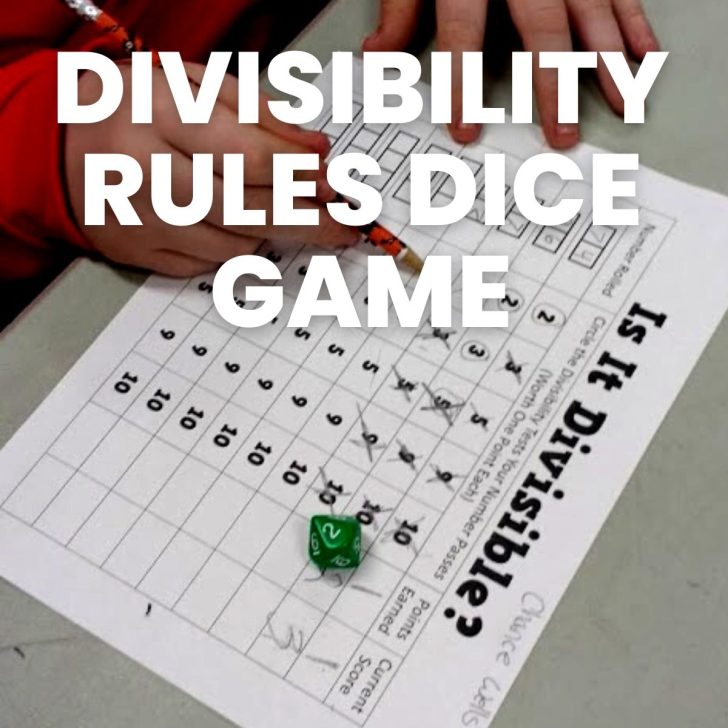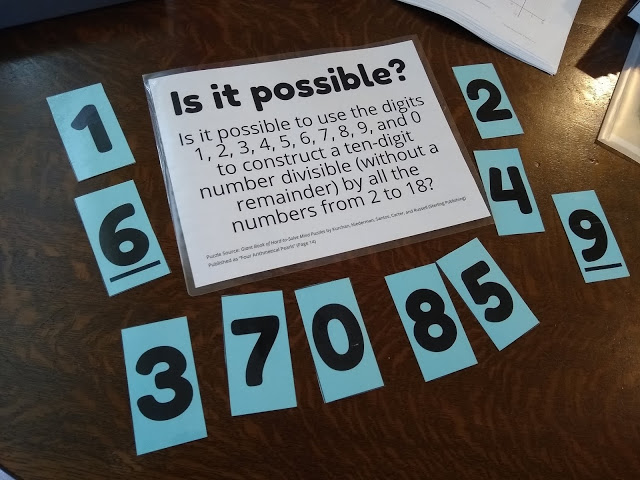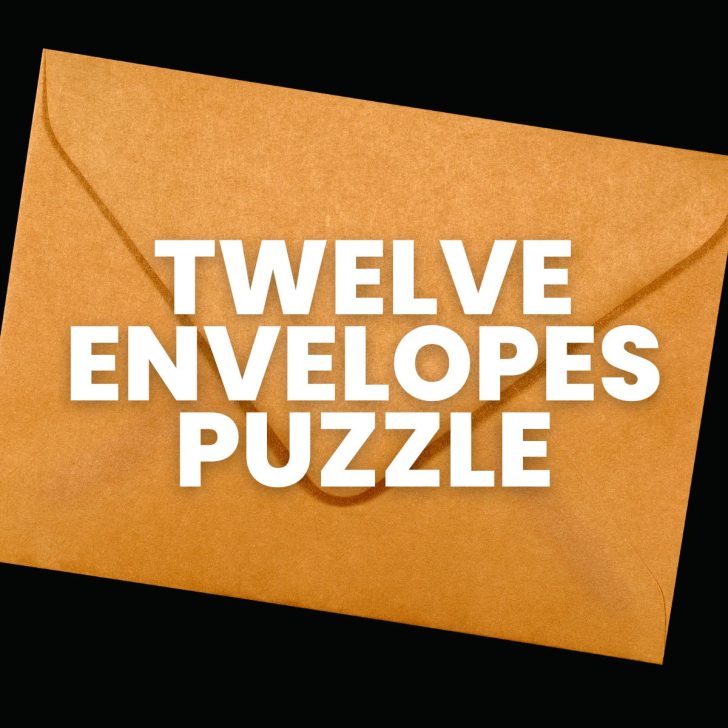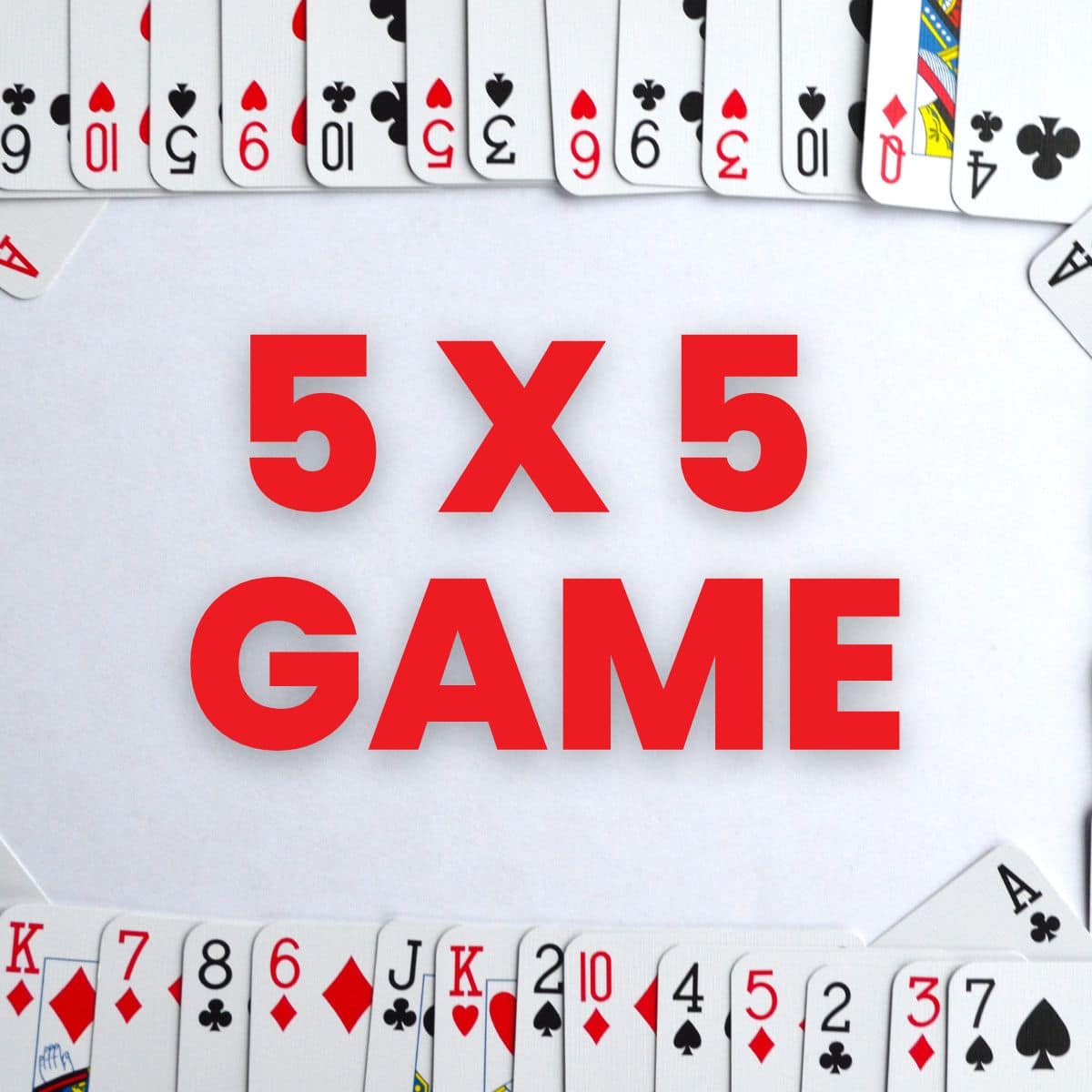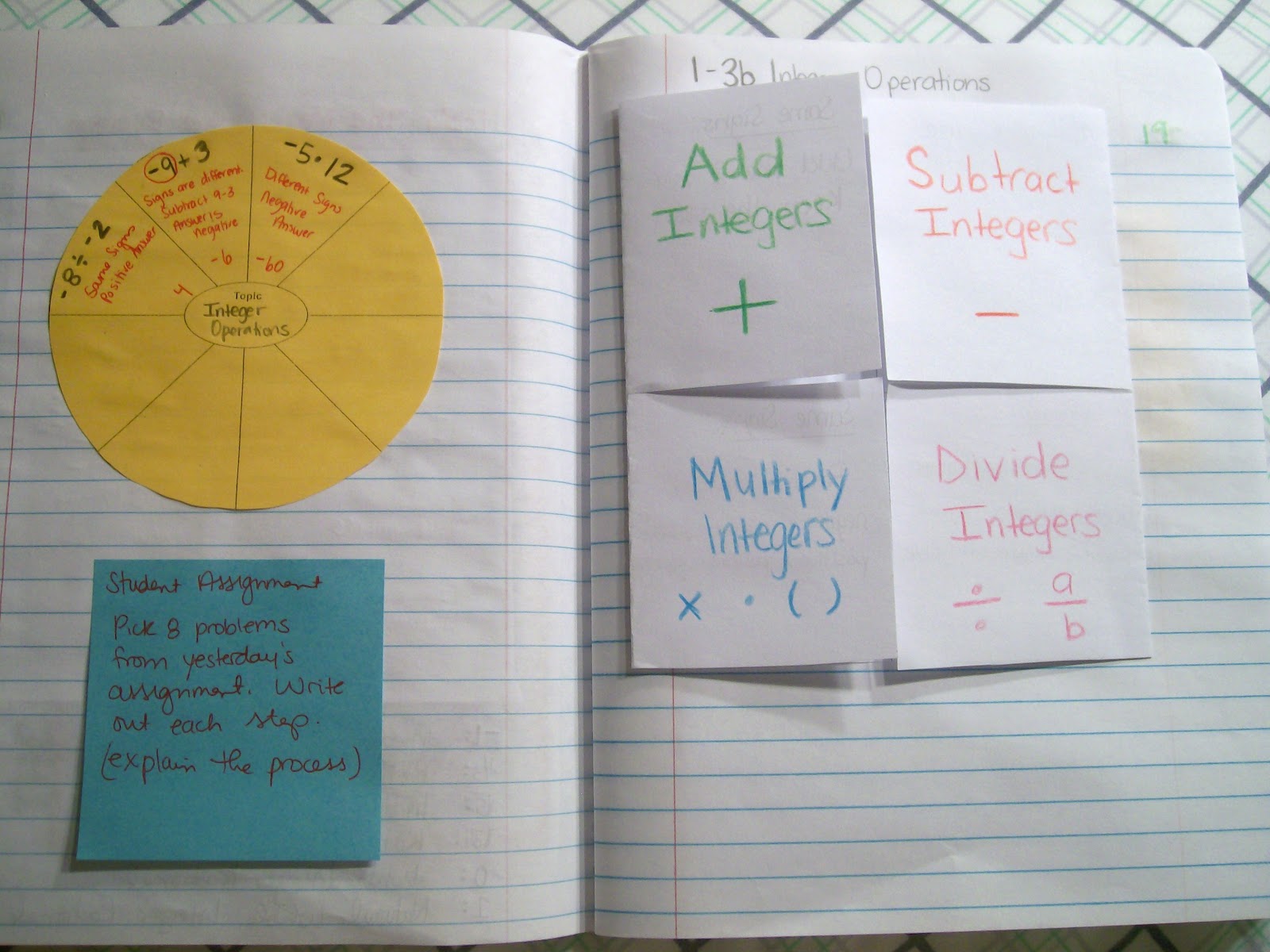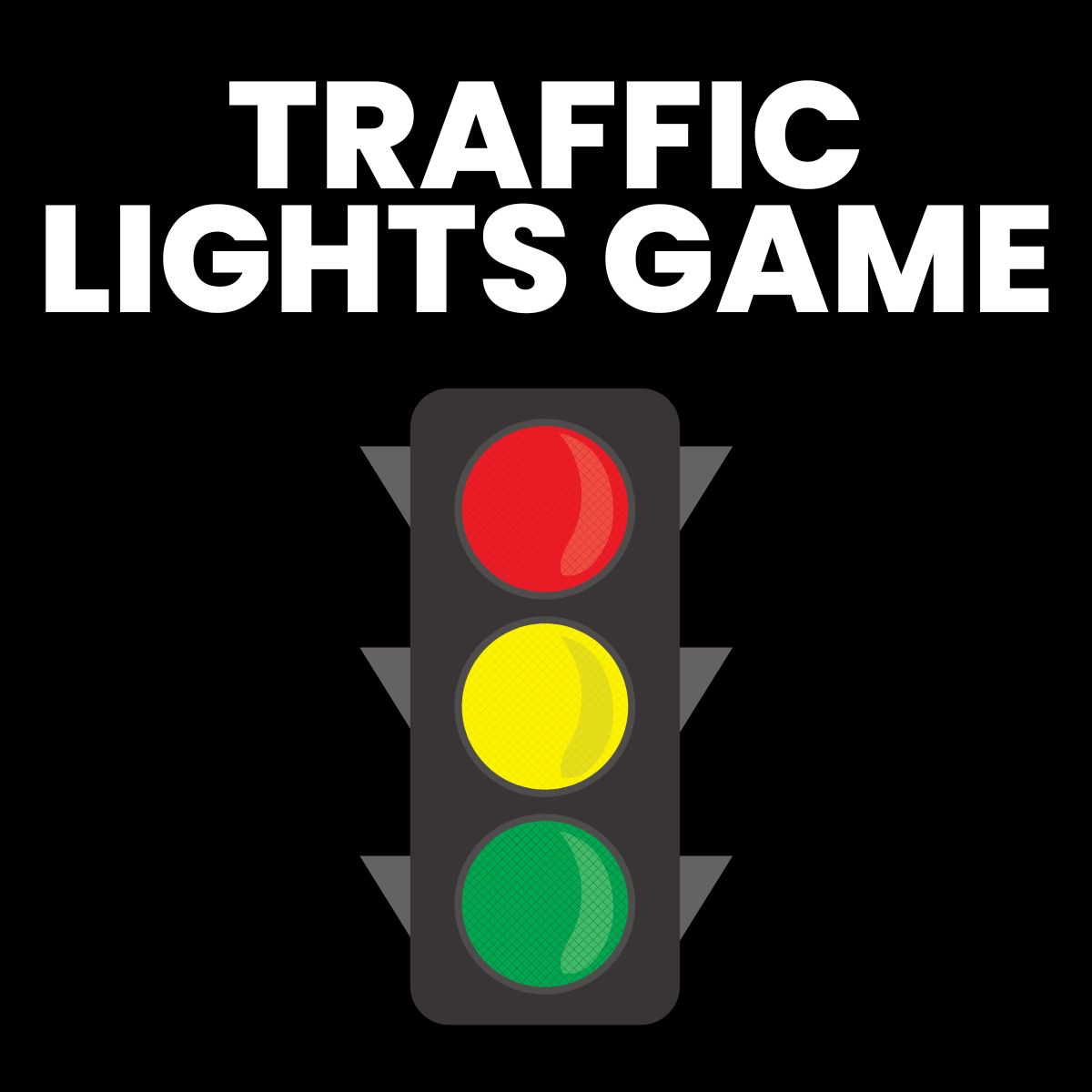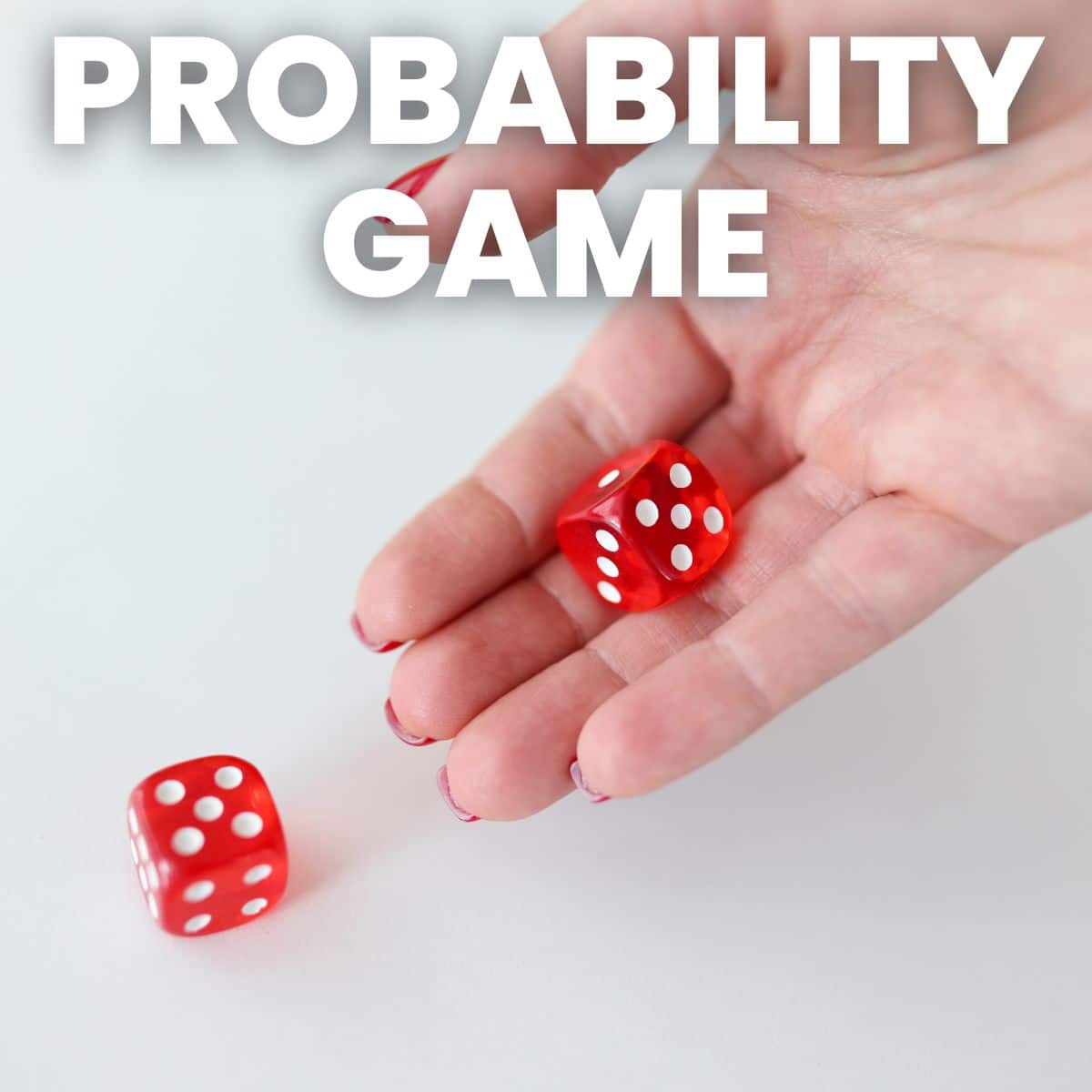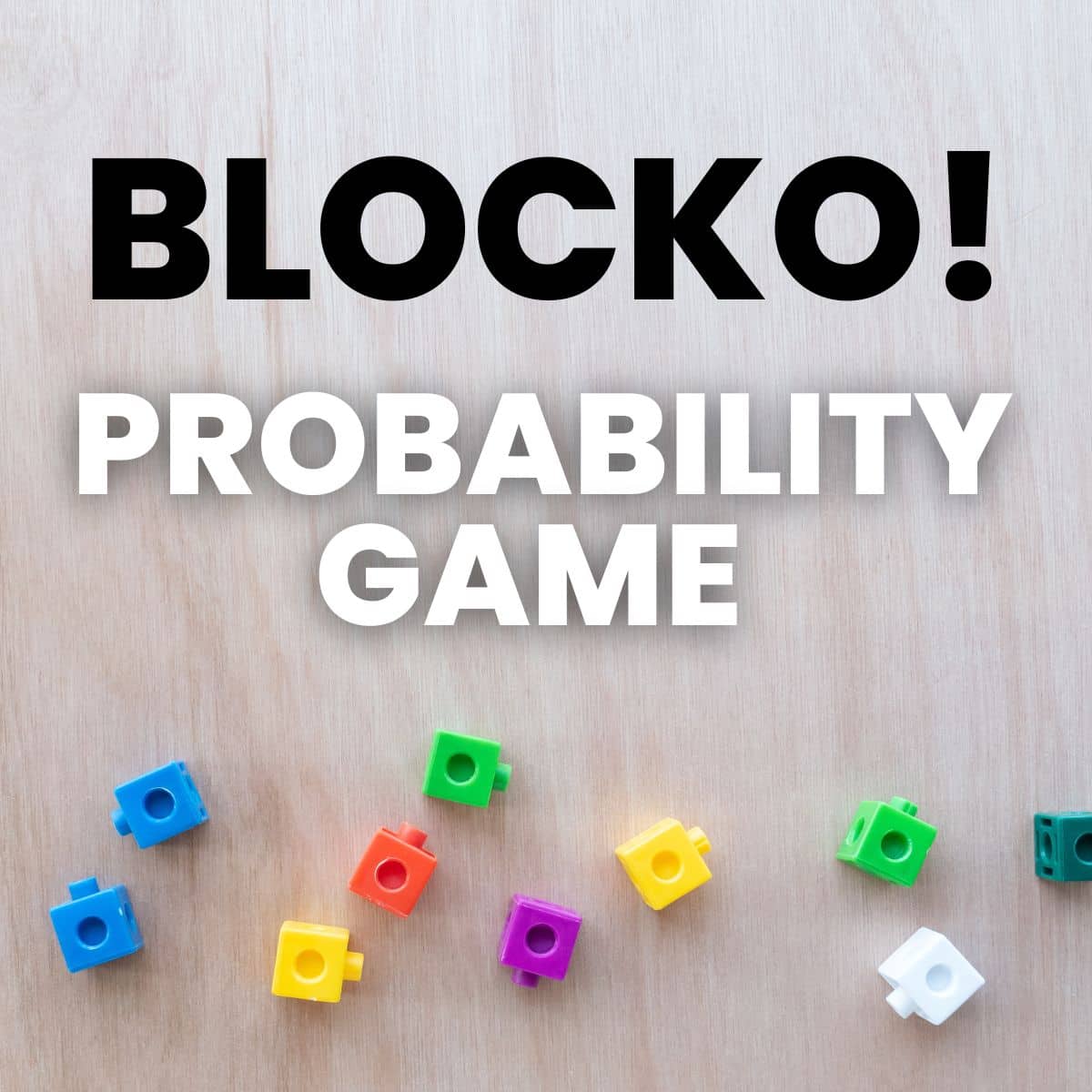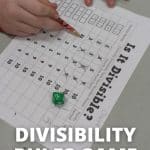Divisibility Rules Dice Game
This blog post contains Amazon affiliate links. As an Amazon Associate, I earn a small commission from qualifying purchases.
Want to check out my favorite Amazon items for the classroom? Check out my Amazon favorites page!
I created this divisibility rules dice game several years ago to give students practice with using divisibility rules. To play the game, students need to be able to determine if numbers are divisible by 2, 3, 5, 9, or 10. I used this game with 9th graders enrolled in “Math Concepts,” a course designed for students identified as not being ready for Algebra 1.
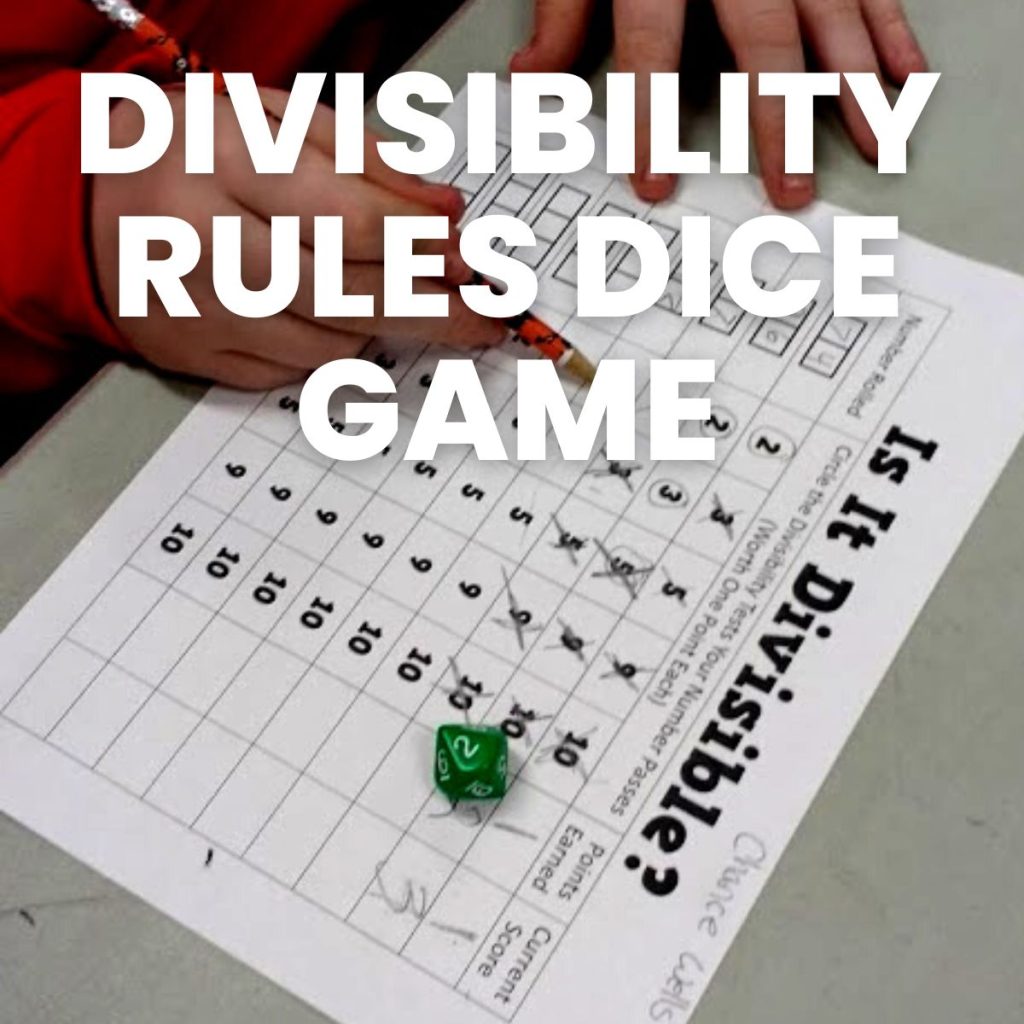
Is It Divisible? can be played individually or by students in pairs. Depending on your students, you can make it a purely luck-based game or you can add an element of strategy. I will explain both methods below.
Each student or group of students will need a game board. I just printed these on regular copy paper, but you could definitely use it with a dry erase pocket to make it re-usable.
MATH = LOVE RECOMMENDS…

I cannot imagine teaching math without my dry erase pockets! They instantly make any activity more engaging and save me countless hours at the copy machine since I can use the same class sets of copies year after year.
Here are my current go-to recommendations:
If you don’t have a classroom set of dry erase pockets, you could also use heavy duty sheet protectors. But, I highly recommend investing in a classroom set of the pockets since they are so much more durable.
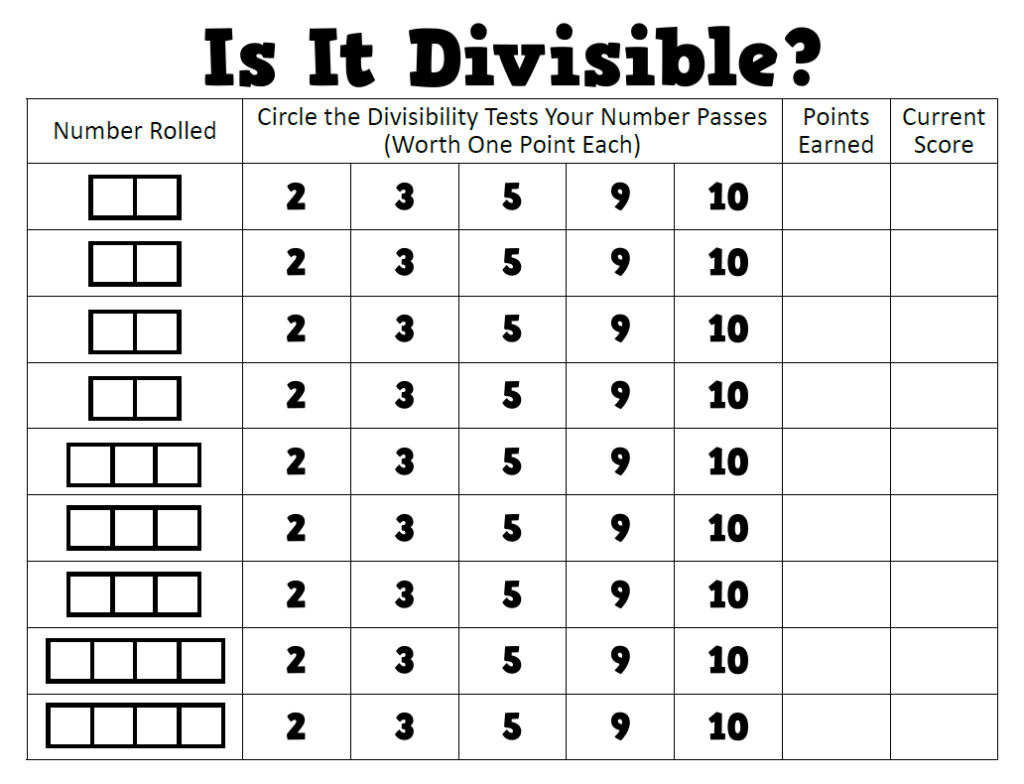
Additionally, you will need 10-sided dice. These allow you to roll the digits 0-9.
They can be bought individually or in a set of polyhedra dice.
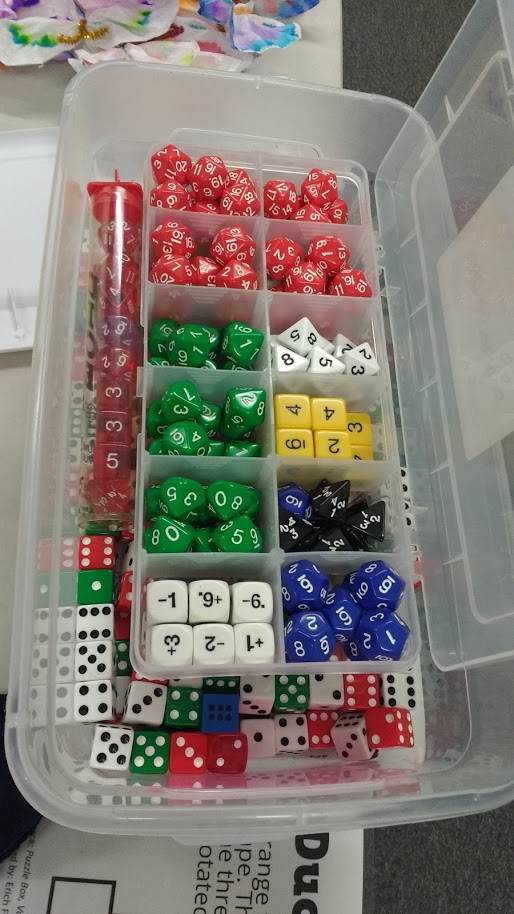
If you are playing a purely luck based game, each student/pair of students will only need one die. If you are playing a more strategy based game, each student/pair of students will need four dice. (You could possibly get away with only one die. I will explain how in a bit.)
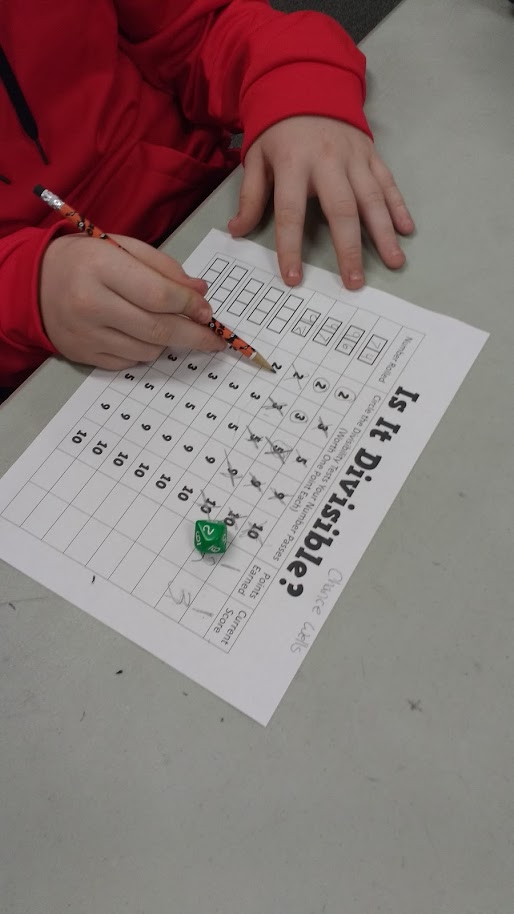
Divisibility Rules Chart
I suggest providing students with a copy of a divisibility rules chart to use as a reference tool during this activity.
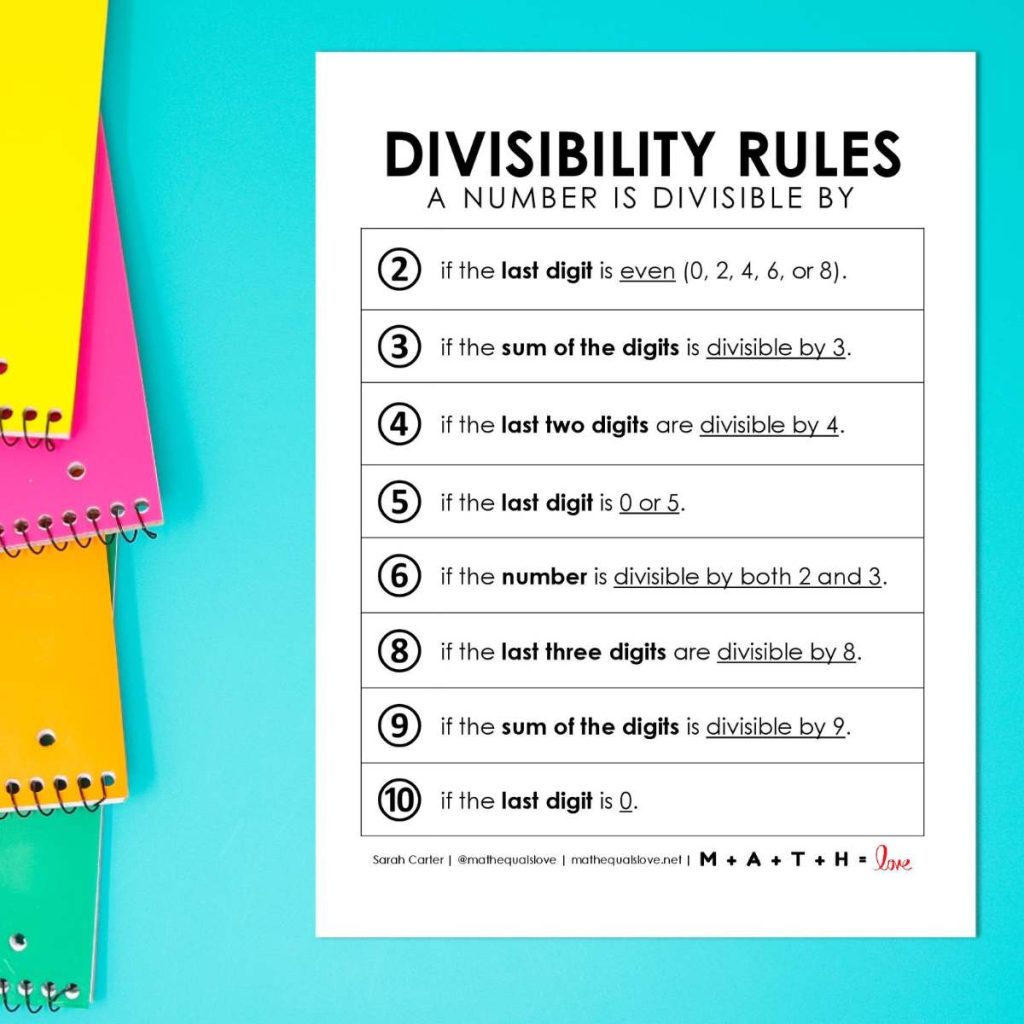
Rules for Entirely Luck-Based Game
- Roll a 10-sided die.
- Record the number in the first box under “Number Rolled.”
- Roll the 10-sided die again.
- Record the number in the second box under “Number Rolled.”
- You will now have formed a 2-digit number. Determine if your number is divisible by 2, 3, 5, 9, or 10. Circle the numbers your number is divisible by.
- Count up the number of circles. This is the number of points scored in the first round. Record it in the columns on the right.
- Repeat for the rest of the game board. Eventually, you will be rolling four times to form a four-digit number.
- Add up the total number of circles. This is your score.
- Highest score wins.
This version gives plenty of practice applying divisibility rules, but there is absolutely no skill involved. Either the dice land on the numbers you want, or they don’t.
When I played this game with my math concepts students, I had them only competing against one other student. They were required to check each other’s work to make sure nobody was claiming points they did not deserve. They took this job very seriously!
You can easily adapt this game to fit what your students need!
Modifications for a Strategy Based Game
Play is essentially the same as above, but with a slight twist.
- For a two digit number, roll two 10-sided dice. Determine which order you would like to write the numbers in the boxes. For example, if you roll a 7 and a 2, you could make the number 27 (divisible by 3 and 9) or a 72 (divisible by 2, 3, and 9). 72 would be the smarter choice since it will net you 3 points instead of 2.
- For a three digit number, roll three 10-sided dice. Again, determine the order you would like the digits to be in before writing the numbers in the boxes.
- For a four digit number, roll four 10-sided dice.
If you do not have enough 10-sided dice for each student to have four dice, you could have them roll a single die the desired number of times and write down the result after each roll in the margin of the paper or on a scrap piece of paper. They could then decide the order of the digits before writing them in the boxes.
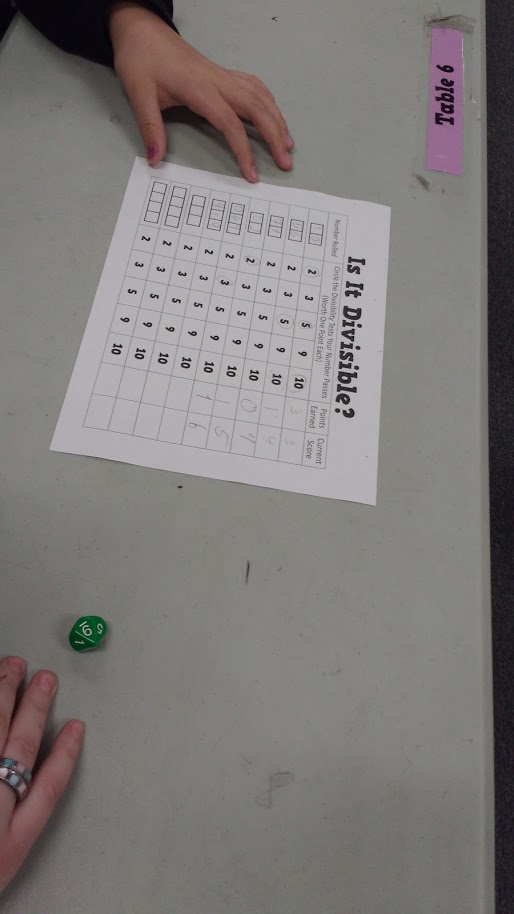
I also recommend checking out my logic-based divisibility puzzle.
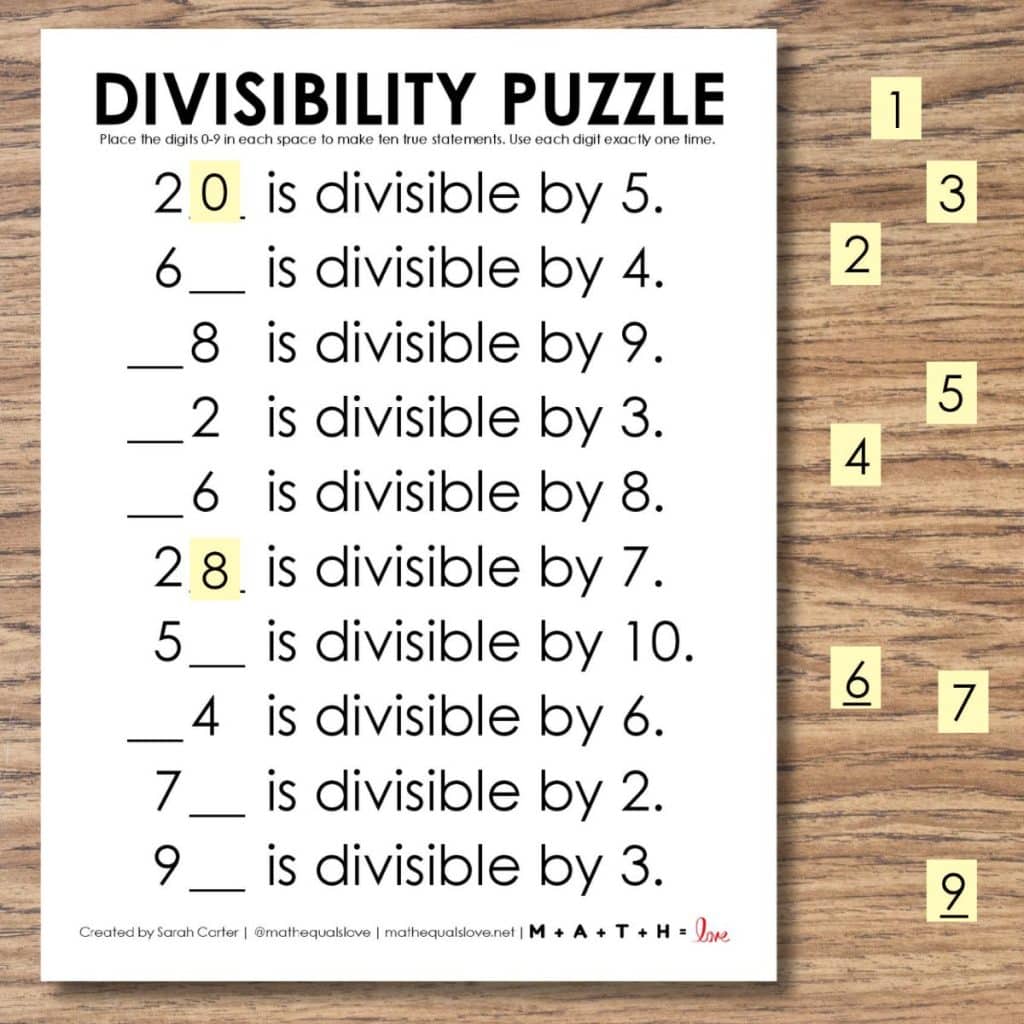
Free Download of Is It Divisible? Dice Game
Is It Divisible Dice Game (PDF) (4829 downloads )
Is It Divisible Dice Game (Editable Publisher File ZIP) (2330 downloads )
More Dice Games
- Slam Dice Game
- Martinetti Dice Game
- Left Center Right Dice Game
- Tic Tac Toe Dice Game
- Divisibility Rules Dice Game
- Pi Day Dice Challenge
- Cover Up by Frank Tapson
- Skittles Game
- Blocko Probability Game
- Free Printable Farkle Score Sheet (with Scoring Guidelines)
- Scientifico – A Bingo Style Game for Practicing Scientific Notation
- Game of Greed Statistics Foldable
- Probability Bingo Game
- Greedy Pig Dice Game for Practicing Probability

